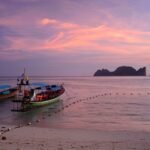The Japanese coast guard has rescued one person from a cargo ship that went missing during a typhoon with 43 crew and 6,000 cattle on board.
The Gulf Livestock 1 sent a distress signal from the East China Sea after being caught up in Typhoon Maysak.
One seaman was found drifting in rough waters in a life jacket.
The search for the rest of the crew and ship continues with planes and patrol ships, amid high waves and strong winds from the storm.
The crew of the freighter includes 39 seamen from the Philippines, two from New Zealand, and two from Australia.
According to the Japanese coastguard, the man rescued is one of the Filipino crew, who said the ship’s engine failed before it was hit by a wave and capsized.
The Gulf Livestock 1 left New Zealand on 14 August headed for China, with the journey expected to take 17 days, New Zealand’s Foreign Ministry said.
On Wednesday night, the ship sent a distress call from waters to the west of Amami Oshima island in southwestern Japan.
The Philippine Department of Foreign Affairs said its consulate in the Japanese city of Osaka was “monitoring the situation and coordinating” with authorities.
The Japanese coast guard “is launching a second search and rescue mission prior to the expected incoming typhoon”, it said in a press release.
Liezel Pitogo, 38, last spoke to her husband, a seafarer on the ship, on Tuesday evening.
He said they were travelling to China but were a bit worried about the weather, she told the BBC, speaking from Quezon province in the Philippines.
“His phone was unreachable on Wednesday,” said Ms Pitogo, anxious for any updates about her husband, Lindon, who has been a seaman for seven years.
Both Australia and New Zealand said they were providing consular assistance to the families of their crew members.
The Gulf Livestock 1 is a 139m (450ft), Panamanian-flagged cargo vessel built in 2002.
Strong winds and torrential rains from the typhoon battering the region are hampering the search effort for the ship.
After moving through the East China Sea, Typhoon Maysak, named after a Cambodian tree, made landfall early Thursday in the South Korean port city of Busan.
At least one person has been killed, more than 2,200 people have been evacuated to shelters and around 120,000 homes were left without power in the affected region.




